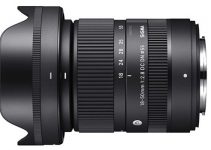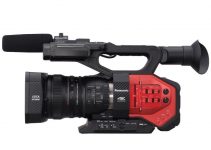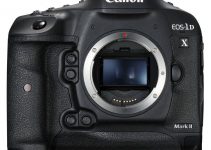It seems that Blackmagic Design have learned from their mistakes in the past and flooded the market with Pocket 6K cameras. The drought we experienced (and still goes on in some countries!) with the Pocket 4K has been left behind, so many filmmakers are shooting with their brand new Pocket 6K already.
The natural consequence is that we are having a lot of comparisons popping up on the web. One that caught our eyes was the latest from Parker Walbeck and his crew. They shot side by side with the Pocket 6K and the RED Weapon 6K. Wonder how that could go? Let’s take a look!
The flourishing of this kind of test and comparison is pretty mind-boggling. A few years ago, no one would have even thought of comparing a high-end cinema camera, at the moment one of the 5/6 top of the line cameras, with a prosumer body from a small company coming from down under.
The shift the market made in these few years since the release of the 5DMKII is indeed amazing. It created a world of opportunities for all of us, a world where a camera that costs 20 times less than a RED Weapon stands even a chance. But enough with the old times’ rant. Parker and his team compared the cameras weighting in a few different aspects and giving scores.
Body
The body of the Pocket weights half the RED body, making it much more easy to handle while in run and gun mode. BMPCC 6K is mainly made of plastic, though, so you may find RED’s option much more solid and durable in the long run. It has to be noted that even if it may feel cheap to a certain extent, the Pocket’s shell is tougher than it seems.
Batteries, monitor and Lenses
RED’s cameras have an interchangeable lens mount, as a respectable cinema camera should. It’s an expensive option, but it may be worth for many high-end troupes. Power goes through standard V-lock batteries, as expected, giving more than enough runtime.
On the Pocket 6K side, it’s a joy for Canon users being able to use the small truck of LP-E6 batteries they have lying around, as well as all the glass they’ve hoarded over time. But the tiny juice packs can hold only so much, meaning you’ll have to switch batteries roughly every 30 minutes unless you’re ready to incorporate a V-lock in this setup too, powering the camera from the DC input.
As for the screen, the Pocket 6K has a wonderful and bright 5-inch touchscreen. It’s so satisfying to use, that’s until you get an outdoor shooting. Being unable to swivel it becomes hard to operate in harsh light and you’ll definitely need to consider an external monitor if you want better color accuracy an viewing angles.
RED, on the other hand, goes with a different approach, not even having a monitor at all in the basic package. The branded option is a wonderful 7-inch with swivel arm and great colors, but costs more than the whole Pocket.
Ease of use and AF
Both these cameras are cinema cameras. That means that a learning curve is required, especially if you are willing to get the most out of them. RED goes further by offering a three-day course for those who buy a camera. Now, the steepness of the curve is softened in the Pocket’s case by the clear and intuitive interface and menus, a more than unique case for a cinema camera. Another handy feature is the AF.
It’s just not a feature useful on set, that’s why RED doesn’t even bother to include it. To be honest, though, the AF on the Pocket is so bad that they could leave it out and no one would have complained.
Framerates, files, and storage
The RED has the upper hand here. It shoots up to 89fps in 4K, effectively leaving the Pocket 6K and its 60fps at 4K behind. These images are recorded in huge files, a little bit huger on the RED, and can be edited and graded on your editing platform of choice. It has been just a few days ago since Blackmagic published a plugin allowing to import BRAW files inside Premiere Pro CC.
Whether you edit in Edius, Premiere or Resolve, you’ll need a lot of space if you want to move your workflow to 6K. And that starts with the memory card. On the Pocket, you can settle for a USB-C SSD or a CFast card. With RED you’ll be stuck with the pricey RED Mags: don’t forget those as they add up to the budget quite fast!
Image quality and low-light
Neither of these cameras has any capability to compete with the cameras that are dominating the low-light scene, mainly the Sony ones. But that is not what they’re aiming to. RED has as a low-light dedicated camera, the GEMINI, but that’s not the object of the comparison. The Pocket just saves itself with the dual ISO feature: it bumps the native ISO to 3200, thus producing nice and clear images.
Overall conclusions
As we said in the opening of the article, the simple existence of a comparison like this is a wonderful thing for all of us. All of our praise goes to Blackmagic, of course, and the companies that try to improve our filmmaking experience on a daily basis.
That being said, we all can agree that a fully-fledged cinema camera is a whole different level of production: the RED camera is superior in all the small details that are important in a big production set, the realm where it actually belongs.
[source: Parker Walbeck]
Blackmagic Design Pocket Cinema Camera 6K (B&H, Amazon)
Disclaimer: As an Amazon Associate partner and participant in B&H and Adorama Affiliate programmes, we earn a small comission from each purchase made through the affiliate links listed above at no additional cost to you.




